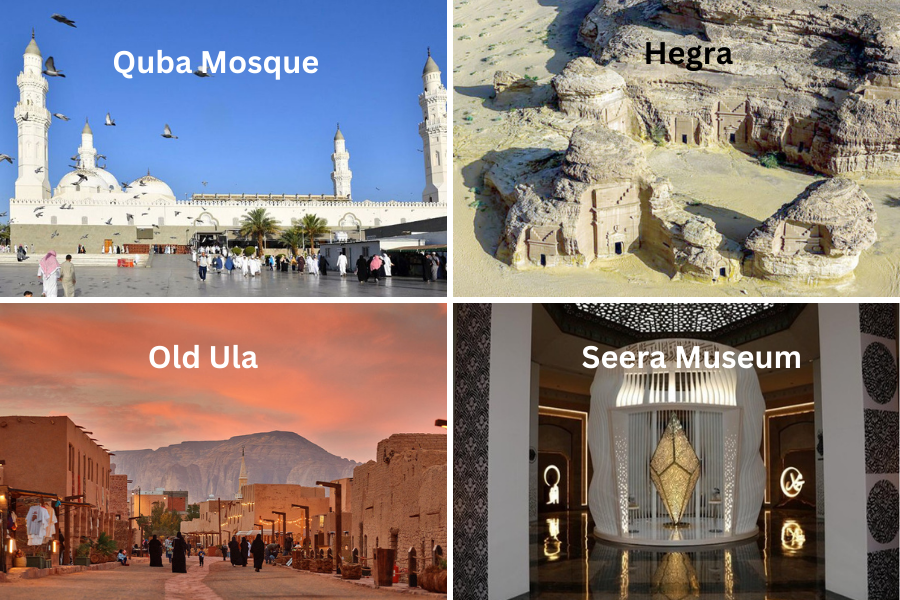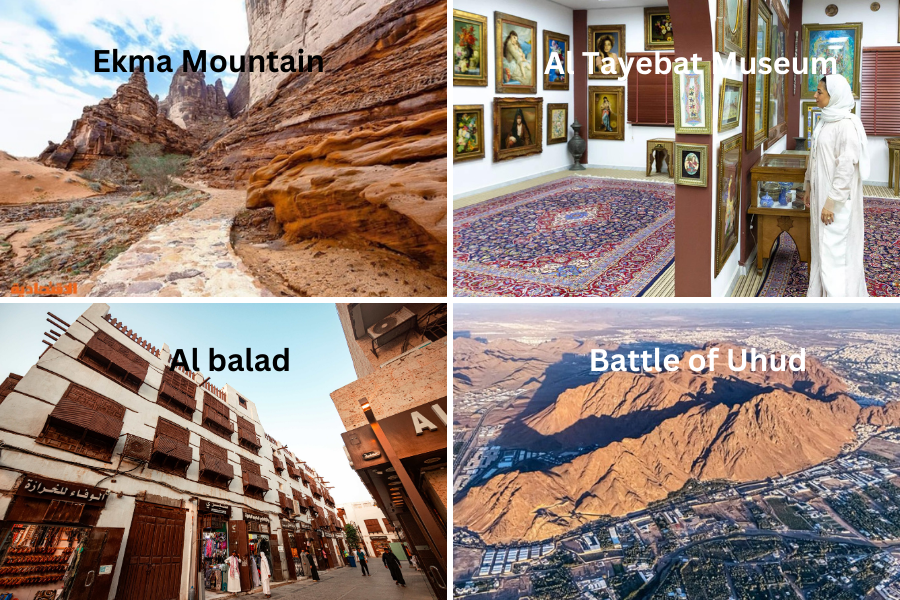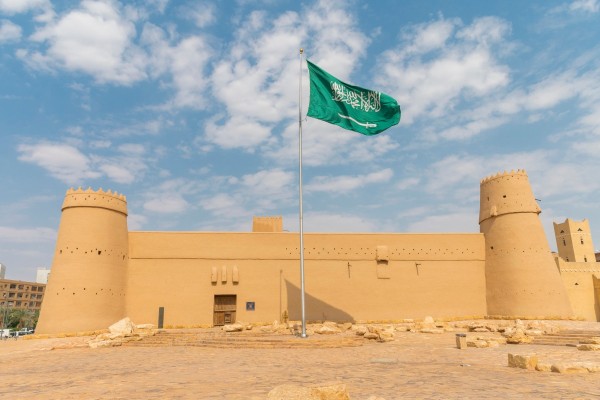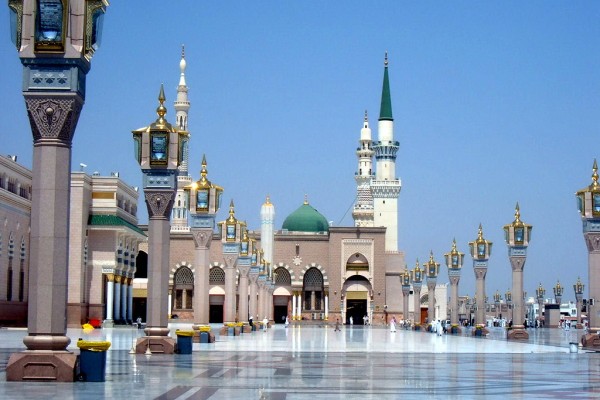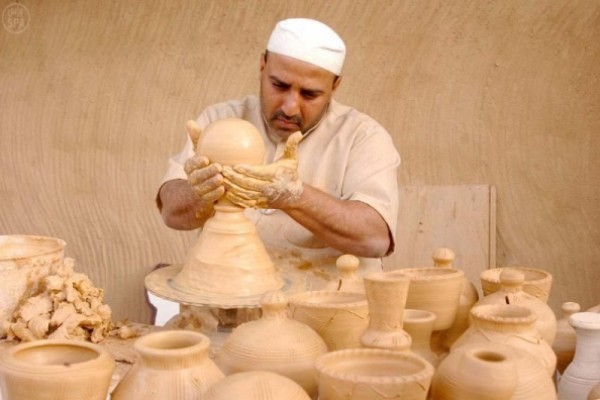7 days Omrah+
Jeddah, Makkah, Madinah and Ula
| 3 Days | Max People : 20 |
| Min Age : 12+ |
Detail
places to visit
Seera Museum
The Seera Museum in Al Madinah typically is a historical museum dedicated to showcasing the rich past of Medina, the second holiest city in Islam. It houses a collection of artifacts, models, and exhibits that illustrate the city's evolution from its pre-Islamic origins to its emergence as a significant center of Islamic civilization.
The Battle of Uhud
is a battle that took place between Muslims and the Quraish tribe in the third year of migration. The Muslim army was led by the Prophet Muhammad, and the Quraish tribe was led by Abu Sufyan bin Harb. The Battle of Uhud is the second major battle undertaken by Muslims. It occurred on the mount of Uhud.
Quba Mosque
The Quba Mosque is the first mosque built in Islam and the first mosque constructed in the city of Medina. In terms of precedence, the Kaaba in Mecca is considered the first house established for people, while the Quba Mosque is recognized as the first mosque built by Muslims after the Prophet Muhammad's migration from Mecca to Medina. Located south of Medina, the mosque was built by Prophet Muhammad upon his migration to the city. Muslims throughout past centuries have shown interest in renovating and expanding the mosque. It was renovated by Uthman ibn Affan and later by Umar ibn Abdul Aziz during the reign of Walid ibn Abdul Malik. This care and development continued under subsequent caliphs, including Sultan Qaitbay and the Ottoman Sultans Mahmud II and his son Sultan Abdul Majid.
Al Balad
Center before the 1970s oil boom. It served as an ancient trading port and was the primary gateway to the Holy City of Makkah for pilgrims making their blessed journey for Hajj and Ummrah. Today, the town is famous for its ancient architecture and traditional buildings that were constructed using coral stone and decorated with beautiful wooden lattice windows. What sets Old Jeddah apart is its narrow alleyways, dusty streets, and beautiful terraces which can be quite difficult to navigate through for a newcomer. Interestingly, this tight architecture is what keeps the place cool despite the scorching heat of Jeddah. Some of the old buildings in Al Balad are more than 500 years old and have been preserved by the Saudi Ministry of Culture to make them look as good as new.
Al Tayebat Museum
the building of the museum comprises numerous structural elements, all of which are associated with traditional Hejazi architectural styles. Al Tayebat City Museum is now renowned collection of pre-Islamic artifacts. There is a wonderful tiny mosque inside the premises that is a piece of art in itself. Tourists can purchase souvenirs from one of many antique stores that four levels and about 300 rooms with various history. It features centuries-old oil paintings, rock sculptures, embroideries, traditional Arabic clothing, ceramics, etc.
Jeddah Cornish
The new waterfront promenade in Jeddah is considered one of the most important tourist and recreational areas for tourists, residents, and citizens within the Kingdom of Saudi Arabia. The development of the Corniche reflects the country's continuous efforts to prioritize the tourism sector. The new Corniche waterfront is now equipped with a variety of recreational facilities and places for engaging in numerous sporting activities. This is in addition to enhancing the aesthetic appearance of the promenade, making it an exceptionally suitable tourist destination for spending joyful times with family and friends.
Elephant rock
the "trunk" and "body" of this monolithic red sandstone beast were shaped by natural forces millions of years of wind and water erosion. The beauty of the unrefined structure is enhanced by a landscape of golden sands.
Old Ula
dating back to the 12th century, the heritage site is best known for its mud- brick buildings and being an age-old settlement on the pilgrimage route from Damascus to Makkah. Al Ula Old Town was inhabited from the 12th century until the 1980s, when its last residents left the ancient village for more modern locales. With nearly 900 houses, 400 shops and five town squares, the Old Town is once again welcoming travelers. It contains Masjid Al-Izam, the restored Friday Mosque believed to have been visited by the Prophet Mohammed. Travelers can also see the town’s tantora, or sundial, which served as the main way residents tracked the change of seasons.
Ekma Mountain
Ekma Mountain, a towering mountain, whose color tends towards red, is located about three kilometers northwest of the city of Al-Ula in Saudi Arabia. It is considered an open library, containing hundreds of inscriptions and writings on its slopes and rock surfaces, primarily dating back to the Dadanian and Lihyanian periods. It narrates the history of the region and life therein during various historical epochs, serving as a documented record of the flourishing Lihyanian civilization in the Arabian Peninsula and the East during a significant period of history.
Hegra
The Hegra Archaeological Site is the first World Heritage property to be inscribed in Saudi Arabia. It is the largest conserved site of the civilization of the Nabataeans south of Petra in Jordan. It features well-preserved monumental tombs with decorated facades dating from the 1st century BC to the 1st century AD. The site also features some 50 inscriptions of the pre-Nabataean period and some cave drawings. Al-Hijr bears a unique testimony to Nabataean civilization. With its 111 monumental tombs, 94 of which are decorated, and water wells, the site is an outstanding example of the Nabataeans’ architectural accomplishment and hydraulic expertise.
Price Includes
- All Fees and Taxes
- Private transportation
- Accommodation
- Hospitality & Snacks
- Tour guide (English)
- pick up airport and drop of
- Food and beverage
Price excludes
- International Flights Tickets
- Visa
Requirements
- For a full refund, you must cancel at least 4 full days before the experience’s start time.
- If you cancel less than 3 full days before the experience’s start time, the amount you paid will not be refunded.
- Any changes made less than 3 full days before the experience’s start time will not be accepted.
- Cut-off times are based on the experience’s local time.
- This experience requires good weather. If it’s canceled due to poor weather, you’ll be offered a different date or a full refund.
- This experience requires a minimum number of travelers. If it’s canceled because the minimum isn’t met, you’ll be offered a different date/experience or a full refund.
Itinerary
Day 1: arrival Jeddah
- On arrival at Jeddah International Airport. Once complete the
immigration and customs formalities, meet your Hamza Camel
Tours representative in the arrival's hall
- go to the hotel for check in
- go to Al tayibat museum
- lunch at Indosian restaurant
- visit Jeddah Albald
- go to Jeddah corniche
- dinner at Palm Beach resturant
- back to hotel for overnight sleep
Day 2: from Jeddah to Makkah
- breakfast at the hotel
- drive to the Miqat and prepare for Umra
- lunch at locul resturant
- go to the Holy Mosque to perform Umrah
- dinner at Al Baik restaurant
- back to the hotel for overnight slee
Day 3: Makkah
- breakfast at the hotel
- pray Fajr in the Holy Mosque and meditate until Zuhr prayer
- back to the hotel for lunch
- visit clock tower museum
- pass by Zamzam distribution factory
- visit Hera culture center (to be introduced to Al Nour Mountain and Hera Cave)
- dinner at Kroteeh restaurant
- go to hotel for overnight sleep
Day 4: from Makkah to Madinah
- breakfast at the hotel
- transfer to Train Station and ride to Madinah
- move from Madinah train station and have lunch at Qoba street
(Al Tabbakhen) restaurant
- drive to the Holy Mosque
- visit Quba Mosque and pass by al Ghamarah Mosque, Al
- Jumaa Mosque, ghars water well and Salman al Farsi water well
- visit Uhod Mountain
- dineer at indosain restaurant
- back to the hotel for overnight sleep
Day 5: from Madinah to Ula
- breakfast at the hotel
- start driving towards Al Ula
- lunch at a local restaurant in Khaibar
- transfer to the Hegra site and enjoy the Nabataean Civilization
- visit Old Ula and dinner at Al Nakheel resturant
- go to Sahara resort for overnight sleep
Day 6: Al Ula
- breakfast in the resort
- drive to Dadan Civilization site and Ekma Mountain
- hike for 70 minutes from Historical Ula to Ekma mountain site enjoying
- passing between ancient Palm tree farms
- lunch at Kainona resturant
- explore Thamodian inscriptions in the wild mountains
- drive to Elephant Mountain for relaxing and meditation
- dinner at the heritage restaurant
- go to the resort for overnight sleep
Day 7: Ula back to home
breakfast in the resort -
- visit arch mountain
- go to shlal resort
- lunch at local farm
- go to the airport and fly to Jeddah to fly back home
 العربية
العربية
